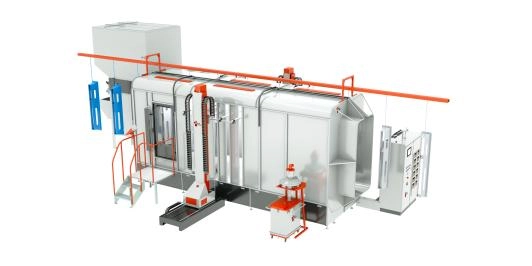Content Menu
● Understanding the Vibrating Sieve
>> What is a Vibrating Sieve?
>> Importance of Maintenance
● Daily Maintenance Practices
>> Cleaning After Each Use
>> Visual Inspections
>> Lubrication of Moving Parts
● Weekly and Monthly Maintenance
>> Detailed Cleaning
>> Check Motor Alignment
>> Inspect Electrical Components
● Best Practices for Long-Term Maintenance
>> Record Keeping
>> Proper Storage
● Troubleshooting Common Issues
>> Poor Screening Performance
>> Excessive Noise or Vibration
● Conclusion
>> Frequently Asked Questions
Vibrating sieves are essential equipment in various industries, particularly in powder processing, where they help separate materials based on size. Proper maintenance and cleaning of these machines are crucial for ensuring their efficiency and longevity. This article will guide you through the best practices for maintaining and cleaning your vibrating sieve, ensuring optimal performance and minimal downtime.

Understanding the Vibrating Sieve
What is a Vibrating Sieve?
A vibrating sieve is a mechanical device that uses vibration to separate materials. It consists of a screen or mesh that allows smaller particles to pass through while retaining larger ones. This process is vital in industries such as pharmaceuticals, food processing, and chemical manufacturing, where product purity and consistency are paramount.
Importance of Maintenance
Regular maintenance of vibrating sieves is essential for several reasons:
- Efficiency: Well-maintained sieves operate more efficiently, ensuring that materials are separated correctly.
- Longevity: Regular upkeep can significantly extend the lifespan of the equipment.
- Safety: Proper maintenance reduces the risk of accidents caused by equipment failure.
- Cost-Effectiveness: Preventative maintenance can save money by avoiding costly repairs and downtime.
Daily Maintenance Practices
Cleaning After Each Use
One of the most critical aspects of maintaining a vibrating sieve is cleaning it after each use. Residual materials can build up and cause blockages, affecting the machine's performance. Here's how to clean your sieve effectively:
1. Remove Residual Powder: Use a soft brush or cloth to remove any leftover powder from the screen and body of the sieve.
2. Inspect the Mesh: Check for any tears or damage in the mesh. If the mesh is compromised, it should be replaced immediately to maintain screening quality.
3. Avoid Abrasive Materials: When cleaning, avoid using abrasive materials that could damage the mesh or other components.
Visual Inspections
Conducting daily visual inspections is vital. Check for:
- Loose Bolts and Connections: Ensure all bolts and connections are tight to prevent vibrations from loosening them during operation.
- Wear and Tear: Look for signs of wear on the mesh, springs, and other components. Early detection can prevent more significant issues later.
Lubrication of Moving Parts
Proper lubrication is essential for the smooth operation of a vibrating sieve. Follow these guidelines:
- Lubricate Regularly: Apply lubricant to moving parts as per the manufacturer's recommendations. This helps reduce friction and wear.
- Use the Right Lubricant: Ensure that you are using the correct type of lubricant for your specific machine.
Weekly and Monthly Maintenance
Detailed Cleaning
In addition to daily cleaning, a more thorough cleaning should be performed weekly or monthly, depending on usage:
1. Disassemble the Sieve: Carefully disassemble the sieve according to the manufacturer's instructions.
2. Clean All Components: Use a mild detergent and water to clean all parts, ensuring no residue remains.
3. Dry Completely: After cleaning, ensure all components are completely dry before reassembly to prevent rust and corrosion.
Check Motor Alignment
Regularly check the alignment of the motor and other components. Misalignment can lead to increased wear and tear and affect the machine's performance.
Inspect Electrical Components
Inspect all electrical connections and components for signs of wear or damage. Ensure that all wiring is intact and that there are no exposed wires.
Best Practices for Long-Term Maintenance
Record Keeping
Maintaining a log of all maintenance activities is crucial. This log should include:
- Dates of inspections and maintenance
- Any issues found and actions taken
- Replacement of parts and components
This documentation can help track the sieve's performance over time and identify patterns that may indicate underlying issues.
Proper Storage
If the vibrating sieve will not be used for an extended period, proper storage is essential:
- Clean Thoroughly: Ensure the sieve is clean and dry before storage.
- Cover the Machine: Use a protective cover to prevent dust and debris from settling on the machine.
- Store in a Dry Place: Keep the sieve in a dry, cool location to prevent rust and corrosion.
Troubleshooting Common Issues
Poor Screening Performance
If you notice that the sieve is not performing as expected, consider the following:
- Check for Blockages: Ensure that there are no blockages in the mesh or other components.
- Inspect the Mesh: A damaged or worn mesh can significantly affect performance. Replace it if necessary.
- Adjust Vibration Settings: Ensure that the vibration settings are appropriate for the material being processed.
Excessive Noise or Vibration
Excessive noise or vibration can indicate underlying issues:
- Check for Loose Parts: Inspect all bolts and connections to ensure they are secure.
- Inspect Springs: Worn or damaged springs can lead to excessive vibration. Replace them if necessary.
Conclusion
Maintaining and cleaning your vibrating sieve is essential for ensuring its efficiency and longevity. By following the practices outlined in this article, you can keep your equipment in optimal condition, reduce downtime, and enhance productivity. Regular inspections, cleaning, and proper storage are key components of a successful maintenance strategy.

Frequently Asked Questions
1. How often should I clean my vibrating sieve?
- It is recommended to clean the sieve after each use and perform a more thorough cleaning weekly or monthly.
2. What should I do if the mesh is damaged?
- If the mesh is damaged, it should be replaced immediately to maintain screening quality.
3. How can I ensure the longevity of my vibrating sieve?
- Regular maintenance, including cleaning, lubrication, and inspections, can significantly extend the lifespan of your sieve.
4. What type of lubricant should I use?
- Always use the lubricant recommended by the manufacturer for your specific machine.
5. How can I troubleshoot poor screening performance?
- Check for blockages, inspect the mesh for damage, and adjust the vibration settings as needed.
Hot Tags: China, Global, OEM, private label, manufacturers, factory, suppliers, manufacturing company










































 .
. 